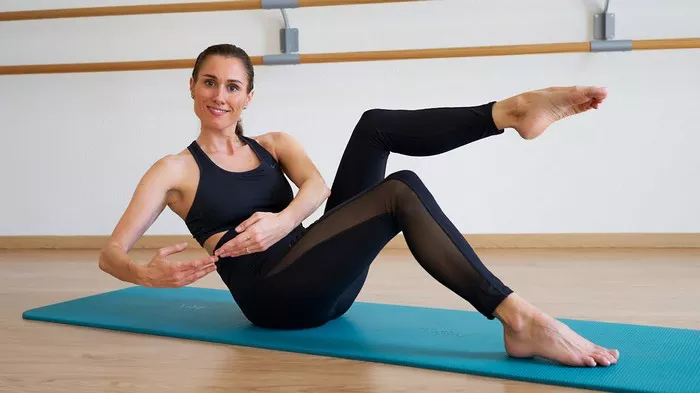In today’s fast-paced world, finding time for self-care is essential for maintaining overall well-being. Self-restorative yoga offers a gentle approach to healing, promoting relaxation, and restoring balance in both the body and mind. This article explores the principles of self-restorative yoga, its benefits, key poses, and how to incorporate it into your daily routine for enhanced health and tranquility.
Understanding Self-Restorative Yoga
Self-restorative yoga is a practice that emphasizes gentle, restorative poses designed to promote deep relaxation and rejuvenation. Unlike more vigorous forms of yoga, self-restorative yoga focuses on slowing down, being mindful, and nurturing the body through passive stretching and supportive postures.
The Philosophy of Self-Restorative Yoga
At its core, self-restorative yoga is grounded in the philosophy of ahimsa, or non-violence. This means being gentle with oneself and respecting the body’s needs. The practice encourages awareness of physical sensations, emotional responses, and mental states, fostering a deeper connection with oneself.
Key Principles
Mindfulness: Cultivating present-moment awareness and acceptance of one’s thoughts, feelings, and bodily sensations.
Support: Utilizing props such as blankets, bolsters, and blocks to create comfort and safety in each pose.
Breath Awareness: Focusing on the breath to facilitate relaxation and deepen the experience of each posture.
Patience: Allowing the body to naturally open and release tension without forcing or straining.
Benefits of Self-Restorative Yoga
Deep Relaxation
Self-restorative yoga promotes relaxation by activating the parasympathetic nervous system, which helps reduce stress and anxiety levels.
Enhanced Flexibility
Gentle stretching of the muscles increases flexibility over time. The use of props allows for deeper stretches without strain.
Improved Circulation
Restorative poses encourage better blood flow, which can lead to improved overall health and reduced muscle tension.
Mind-Body Connection
The practice enhances awareness of the body and mind, promoting emotional healing and mental clarity.
Pain Relief
Gentle stretching and relaxation techniques can alleviate discomfort and pain, particularly in the back, neck, and shoulders.
Enhanced Sleep Quality
Self-restorative yoga can improve sleep patterns by promoting relaxation and reducing anxiety, making it easier to fall and stay asleep.
See Also: Finding Relief: Restorative Yoga for Sciatica
Key Poses for Self-Restorative Yoga
Here are some essential poses to incorporate into your self-restorative yoga practice. Each pose can be held for several minutes, focusing on deep breathing and relaxation.
Supported Child’s Pose (Balasana)
How to Practice:
Kneel on the floor and sit back on your heels.
Fold forward, resting your torso on a bolster or blanket.
Allow your arms to extend forward or relax alongside your body.
Close your eyes and focus on your breath.
Benefits: Calms the mind, relieves tension in the back, and promotes relaxation.
Legs-Up-the-Wall Pose (Viparita Karani)
How to Practice:
Sit next to a wall and lie on your back.
Swing your legs up the wall, keeping your body perpendicular to the wall.
Place a folded blanket under your lower back for support.
Relax your arms by your sides and breathe deeply.
Benefits: Improves circulation, reduces swelling in the legs, and promotes relaxation.
Supported Bridge Pose (Setu Bandhasana)
How to Practice:
Lie on your back with your knees bent and feet flat on the floor, hip-width apart.
Lift your hips and place a block or bolster under your sacrum for support.
Relax your arms by your sides and breathe deeply.
Stay in this position for several minutes.
Benefits: Opens the chest, relieves tension in the lower back, and stimulates the abdominal organs.
Reclining Bound Angle Pose (Supta Baddha Konasana)
How to Practice:
Lie on your back and bring the soles of your feet together, allowing your knees to fall out to the sides.
Place cushions or blocks under your knees for support.
Relax your arms at your sides or place them on your belly.
Focus on deep, soothing breaths.
Benefits: Opens the hips, reduces stress, and promotes deep relaxation.
Savasana (Corpse Pose)
How to Practice:
Lie flat on your back with your legs extended and arms by your sides, palms facing up.
Use a blanket to cover yourself for warmth.
Close your eyes and focus on your breath, letting go of any tension.
Benefits: Aids in relaxation and integration of the practice, allowing the body to restore itself.
Incorporating Self-Restorative Yoga into Your Routine
Create a Dedicated Space
Find a quiet, comfortable space where you can practice without interruptions. Use soft lighting and calming decor to enhance relaxation.
Use Props
Gather props such as blankets, bolsters, straps, and blocks to support your practice. Props can help you achieve comfortable positions and deepen stretches.
Set an Intention
Before you begin, take a moment to set an intention for your practice. This could be something simple, such as cultivating peace, self-compassion, or healing.
Start Slow
Begin with a few gentle poses, gradually incorporating more as you become comfortable. Listen to your body and adjust your practice as needed.
Practice Regularly
Aim to incorporate self-restorative yoga into your routine at least once a week. Consistency is key to reaping the benefits of this healing practice.
Combine with Breathwork
Integrate breathwork techniques such as deep diaphragmatic breathing or pranayama to enhance relaxation and deepen your practice.
Conclusion
Self-restorative yoga offers a nurturing path to healing and rejuvenation, allowing individuals to reconnect with their bodies and minds. By practicing gentle poses and cultivating mindfulness, practitioners can promote relaxation, reduce stress, and enhance overall well-being. Incorporate self-restorative yoga into your self-care routine to experience the profound benefits of this transformative practice. Embrace the journey toward self-healing and discover a deeper sense of peace and balance in your life.
You Might Be Interested In




















